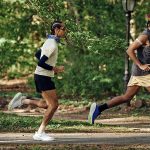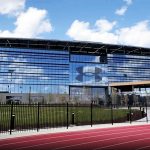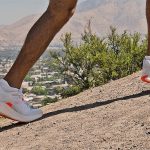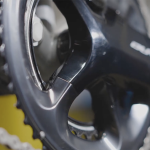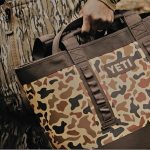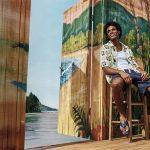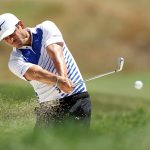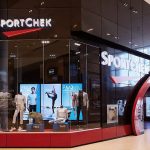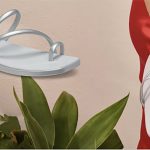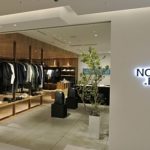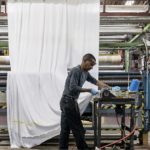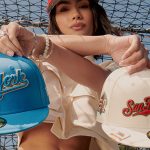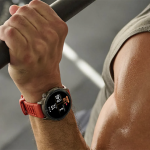During Under Armour’s fiscal first-quarter call with analysts, Kevin Plank, who founded the company in 1996, stated that while the North America region will face challenges this year due to higher costs resulting from tariffs and softening demand, “we see this as an inflection point, not a ceiling.”
“Despite the environment, we’re executing a phased plan to rebuild brand loyalty, improve revenue quality and lay the groundwork for sustainable growth,” said Plank.
His comments came as Under Armour, in reporting its fiscal first-quarter results, warned that the current quarter’s results would likely fall well below Wall Street expectations, including a low-double-digit percentage decrease in North America due to continued weakness in its wholesale business. Companywide, Under Armour now expects the latest tariffs and “related demand impacts” to cause adjusted operating income in the current fiscal year ended March 31, 2026, to shrink to about half of year-ago levels.
Plank believes the brand is “regaining cultural relevance” in its largest market by refocusing away from a “gym-first approach” to embrace its roots in team sports, particularly American football.
He said of North America, “Our priorities are clear: strengthen brand loyalty through top-tier sports culture and emotionally compelling storytelling, stabilize the growth by increasing full-price e-commerce, boosting factory house profitability, and rebuilding wholesale partnerships. And shrink the battlefield by concentrating on key product franchises and optimizing distribution to achieve more consistent wins, doing less things better.”
In digital, he said that Under Armour is shifting from a primarily professional athlete-only model to an influencer-led network, broadening its athlete roster to include high school stars, college athletes and other creators via NIL partnerships and other grassroots efforts. He said, “Our SMS program launched in June has already gained over 100,000 subscribers, and our Instagram shop has been seeing strong growth since its relaunch this past month.”
Turning around e-commerce is seen gaining traction as the brand’s net promoter score in North America increased by 18 points year-over-year. Plank said, “Traffic and sell through still have room to grow. We’re tackling that with faster site performance, richer storytelling and smarter merchandising.”
At its Factory House stores, innovation helped drive growth in the fiscal first quarter, with successful sell-throughs at full price, including the $45 Stealthform Hat as well as the Heat Gear collection. Plank said, “Although traffic remains slower, improved execution is boosting conversion rates. Factory House continues to serve as a proving ground for mixed experimentation, raising ASPs and protecting margins through smarter promotions and targeted merchandising.”
 Plank added that wholesale remains Under Armour’s “biggest” growth opportunity in North America. Plank said, “Reclaiming shelf space takes time, but we’re approaching with discipline and optimism and our partners are listening. Leading with innovative products like Heat Gear and a strong fleet of footwear performance, we’re re-engaging customers and building trust.”
Plank added that wholesale remains Under Armour’s “biggest” growth opportunity in North America. Plank said, “Reclaiming shelf space takes time, but we’re approaching with discipline and optimism and our partners are listening. Leading with innovative products like Heat Gear and a strong fleet of footwear performance, we’re re-engaging customers and building trust.”
On product, he noted that the decision to sunset the Infinite franchise is partly responsible for declines in the footwear category in the fiscal first quarter as the brand focuses on “a broader aperture and more sports casual vertical of Halo while doubling down on our Velocity franchise in high performance run.”
On women’s products, Under Armour is seeking to revive growth by deploying a category management model led by long-time UA veteran Jeanette Robertson. Plank said, “It’s a structural change, and we’re working hard to get it right, not only in product but also in how we design, market and bring her into our brand.”
Overall, he said the brand is focusing on driving growth through “two key levers.” First, focus on delivering pinnacle products, such as the OG Compression Mock, the Velocity Elite 3 running shoe, the Magnetico football cleat, and the No Weigh Backpack, pictured above, Plank said, “What we’ve rallied ourselves around is focusing on key items that the consumer can look at and understand it’s a product that only UA could make and it’s special.”
Second, narrow Under Armour’s focus on best sellers with a goal of “premiumizing” its Top 10 volume drivers across apparel, footwear and accessories to support higher average full-price sales.
Plank said, “If I had to simplify the broader strategic goal for the organization into one statement of what we aim to achieve, it is selling so much more of so much less at a much higher full retail price. That means tighter assortments, more key items safety stock, getting better order fulfillment, straightforward storytelling of intentionally personified products that we make famous like our Heat Gear base layer.”
Plank added that Under Armour is seeing positive comps in men’s and women’s apparel at some of “the biggest and best retailers,” which he expects will lead to enhanced shelf placement as the brand rebuilds its wholesale relationships. He said, “In order to get that shelf space back, it’s exactly where we need to be, and those are the conversations we’re engaged in right now. Those are typically just six- and nine-month conversations. But they’re believing, and I think it’s happening.”
Images courtesy Under Armour, Inc.


